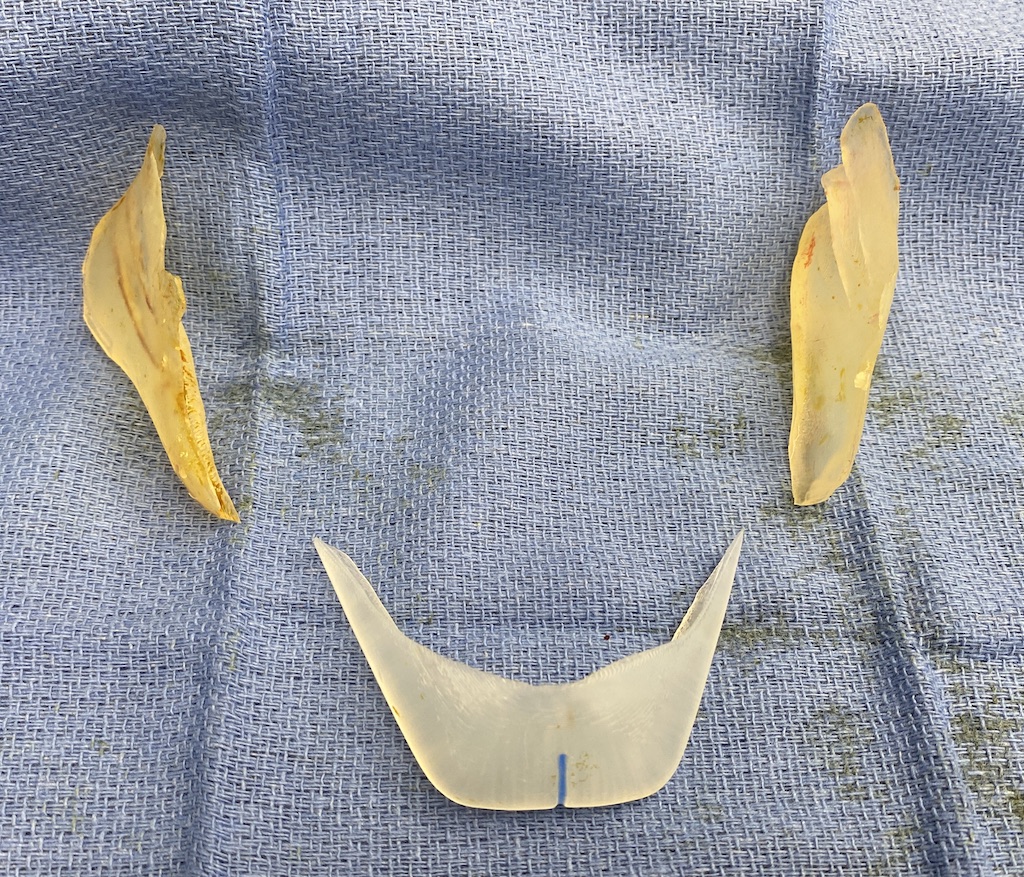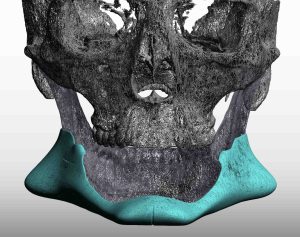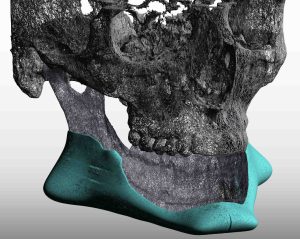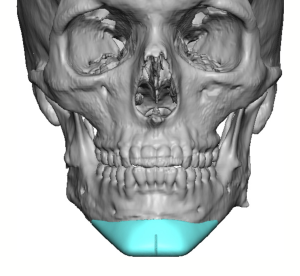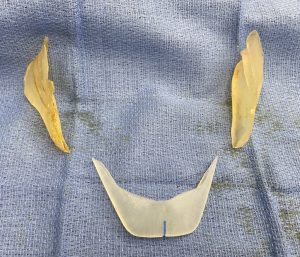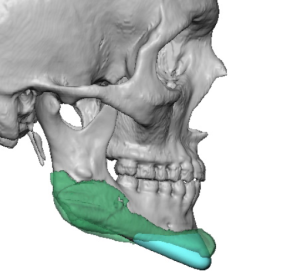Background: Custom jawline implants are the most powerful aesthetic structural changer of the lower third of the face. However, while they are custom made for each patient, such custom designs can not guarantee that the patient’s desired aesthetic result will be achieved. Until there comes a time when the exact correlation between an implant design and its subsequent aesthetic effect can be precisely known custom implant designing will remain an art form. The major thing I have learned in doing over 1,000 custom skull and facial implant designs is how to keep the patient out of aesthetic trouble…which generally means when an implant is too big in one area or as an overall implant size.
Despite my recommendations to patients on their implant designs not every patient always heeds it. While sometimes the patient design changes (that I don’t recommend) may turn out to be acceptable, more often than not they don’t. When an undesirable aesthetic result happens from a custom jawline implant what is the corrective procedure? Obviously a new custom jawline implant replacement can be made and that may be necessary depending upon the implant design problem. This is more likely needed when a size increase is needed overall. (which is actually very rare)
Far more commonly patients have created an implant design that is too big either overall for in specific areas. In this situation it is possible to hand modify the implant secondarily for an improved aesthetic result. This usually means the implant has to be explanted to do the proper reductive changes and then immediately re-implanted. Only very minor changes at any of three points (chin and jaw angles) should be attempted with the implant in place…and in doing so should only be done using a transcutaneous approach.
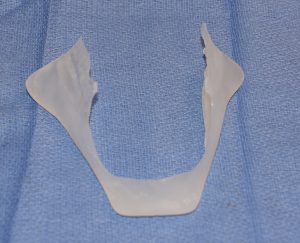
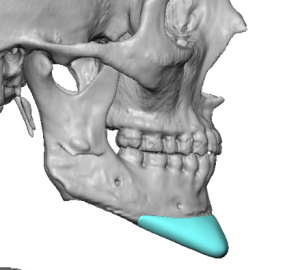
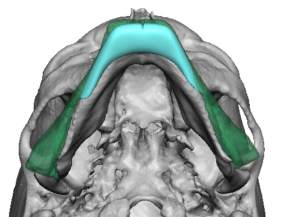
Case Highlights:
1) The number one design error in custom facial implants is being too big on one area or was an overall implant.
2) Custom jawline implants can be resized by intraoperative hand modifications of one part or as an overall implant size reduction.
3) New vs old parts of a custom jawline implant can be put together for an overall improved aesthetic result.
Dr. Barry Eppley
Indianapolis, Indiana

